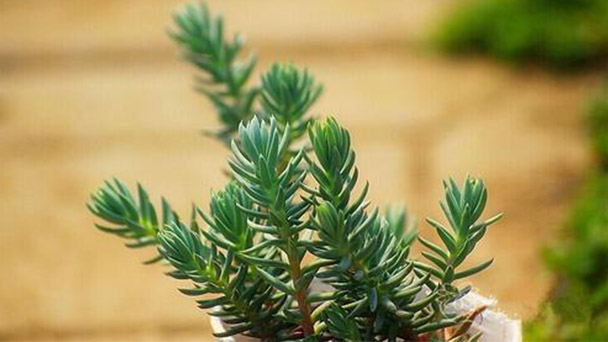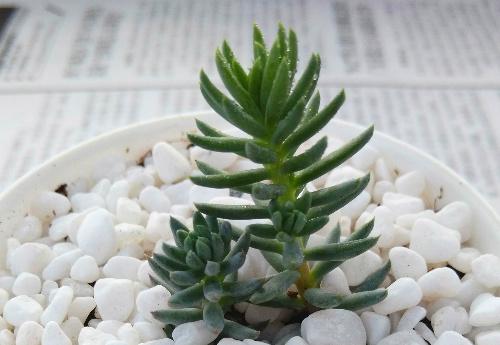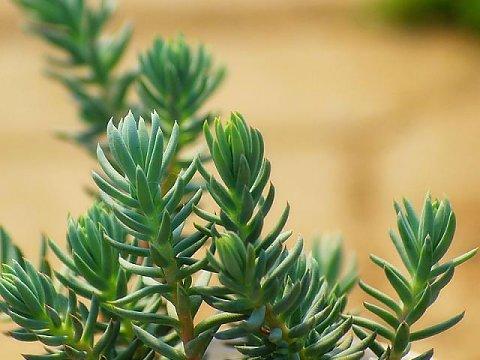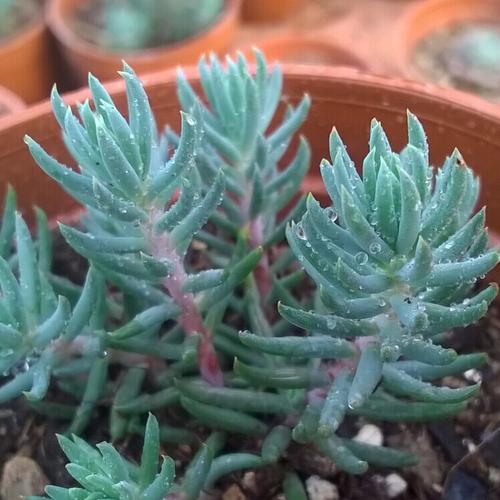Sedum reflexum profile
Written by Maggie
Dec 08 2020

Sedum Reflexum is a succulent (pulpy) plant of the genus Sedum in the Sedum family that's ideal for yard work.
Sedum Reflexum is a perennial herb, perennial blue-green, and very easy to grow. Leaves are intercycled, prone to small lateral buds, and able to grow into large clusters. Over time, Sedum reflexum has branches that can't support strong branches, and generally crawls, clusters of flowers, yellow flowers, and cross-pollination.
Sedum Reflexum picture

1. Morphological characteristics of Sedum Reflexum
Sedum Reflexum is a perennial herbaceous plant with pointed, "rod-shaped", air-rooted, white-waxy, gray-blue leaves that have a hazy beauty, a cloud-like arrangement on branchlets, and many bifurcations.It is a small upright succulent like a pinus bungeana (Pinus bungeana), but not as robust as a pinus bungeana, both belonging to the same family.It is perfect for a yard.
2.Growth habits of Sedum Reflexum
Sedum Reflexum is light-loving, semi-shade tolerant, drought-tolerant, and as resistant to waterlogging as succulent plants.It’s cold resistant, open to winter, more resistant to heat and humidity, summer is easier.
Sedum Reflexum likes cool dry and sunny environments, drought resistance, afraid of water, summer temperature in 27℃ above semi-dormancy state. In winter in the indoor overwintering, the lowest temperature of 5℃ above, under the condition of sufficient sunshine can continue to grow.
Summer is a dormant period, but the dormant period is very short, the growing season is spring and autumn. In winter it can tolerate low temperatures of minus 3 degrees Celsius.If the temperature is too low in winter, the growth will slow down and there will be less water. The sunshine in the growing period can be full sunshine. When the sunshine is strong, the plants will become short.

3. Reproduction methods of Sedum Reflexum
By cutting and beheading, Sedum Reflexum can be easy to survive.In the spring and autumn growing season, the sprigs with rich growth and development are broken off and placed into cuttings in the basin soil. The temperature of the soil is controlled. The roots are placed in a place with sufficient scattered light and become new plants in about 10 days.
The soil in Sedum Reflexum is dry and then watered. If the light is short and the shade is long, it tends to grow tall and leaves are not spaced closely enough.

Latest Updated
- Benefits of Bugleweed - 7 Science-backed Health Benefits
- Bugleweed Dangers & Side Effects - Is It Poisonous?
- How to Plant Evergreen Trees - What You Should Know
- When to Plant Evergreens - Grow Guide for Evergreen Trees
- 12 Wonderful Evergreen Shrubs for Your Garden
- 12 Popular Evergreen Plants with Pictures for Beginners
- When And How To Prune A Lilac Bush Like a Pro
- How to Grow & Care for Lilac Vine (Hardenbergia Violacea)
- Japanese Lilac Tree (Syringa Reticulata) Care & Propagation Guide
- Shumard Oak Pros and Cons - What to Know
Popular Articles
- Winter maintenance of Antirrhinum Majus
- How to Grow Terminalia Mantaly Tree
- How to Grow and Care for Crossostephium Chinense
- How to grow Antirrhinum Majus in spring
- Peristeria Elata (Dove Orchid) Profile: Info & Care Guide
- Underwatered Snake Plant (Sansevieria Trifasciata) - Signs And How To Fix
- How to Care for Brazilian Jasmine Plant (Mandevilla Sanderi)
- How to Grow & Care for Graptopetalum Purple Delight in Summer
- Rosa Chinensis (China Rose): Plant Growing & Care Tips
- How to Care for Baby Sun Rose (Aptenia Cordifolia)